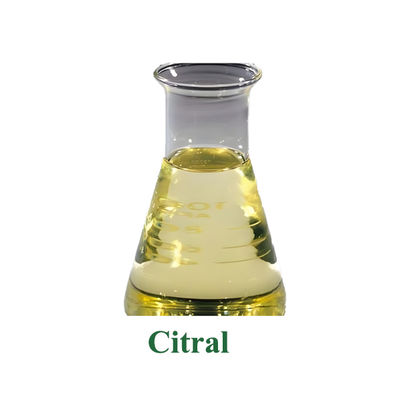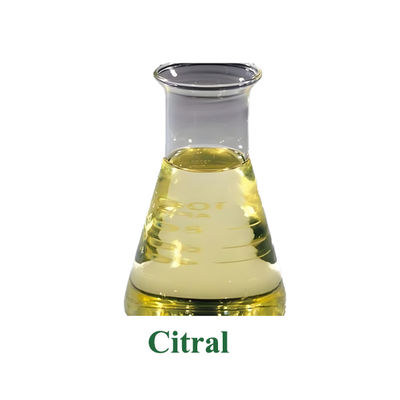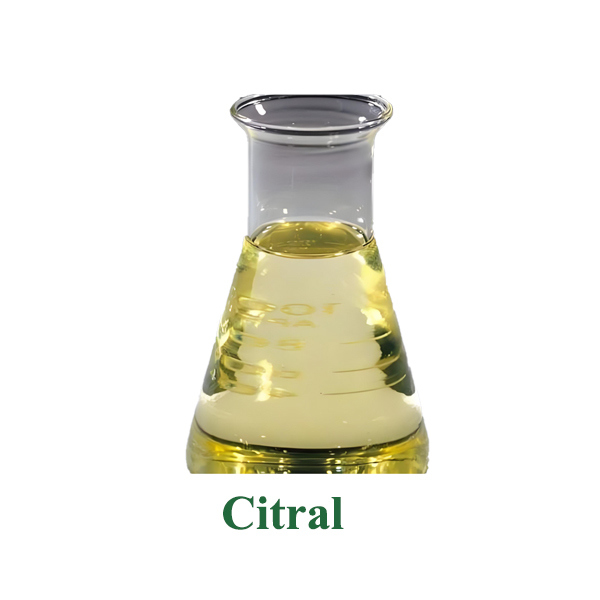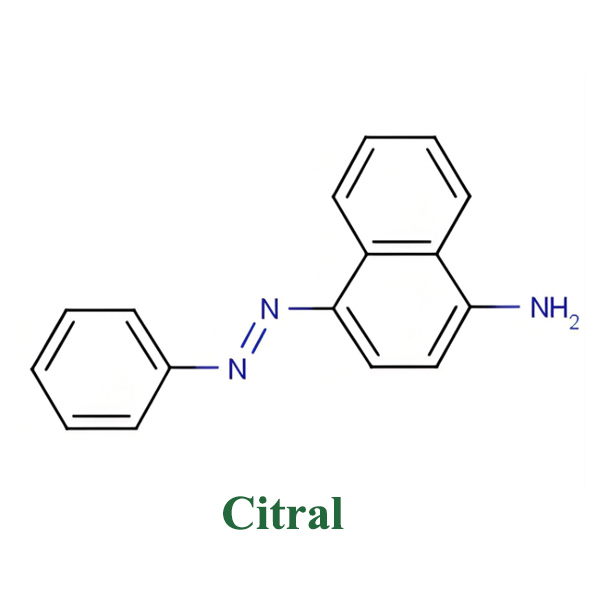
Bisfu Citral (CAS No. 5392-40-5), 97% High Concentration Liquid
-
Highlight
Bisfu Citral essential oil
,97% concentration Citral liquid
,natural plant Citral oil
-
Product NameCitral
-
CAS5392-40-5
-
Purity99.9%
-
AppearanceLiquid
-
Shelf Life2 Years
-
MOQ5KG
-
PackingFoil Bag,Bottled,Drum,Carton,Container
-
QualityNatural Raw Materials, Safe And Harmless, No Addition
-
Boiling Point229 °C (lit.)
-
Density0.888 G/mL At 25 °C (lit.)
-
EINECS226-394-6
-
Place of OriginShaanxi, China
-
Brand NameBaisfu
-
CertificationCitral
-
Model Number5392-40-5
-
Minimum Order Quantity5kg
-
Price27.059USD
-
Packaging DetailsFoil bag,Bottled,Drum,Carton,Container
-
Delivery Time10-15 work days
-
Payment TermsT/T,Western Union,D/P,L/C
-
Supply Ability20,000 kilograms a month
Bisfu Citral (CAS No. 5392-40-5), 97% High Concentration Liquid
Citral is a naturally occurring terpene aldehyde (chemical formula C₁₀H₁₆O), a mixture of cis-citral (geranialdehyde) and trans-citral (nerol). It is abundant in lemongrass oil, lemon oil, neroli oil, and other plant essential oils, and can also be synthesized artificially. Characterized by its intense, fresh lemon-like aroma, it possesses excellent aroma properties and physiological activity, making it widely used in food, daily chemical, and industrial fields. It is a classic and highly recognizable category of natural fragrances.
Chemical Composition: Primarily composed of cis-citral (geranialdehyde, approximately 50%-60%) and trans-citral (nerol, approximately 40%-50%). Commercial products typically have a purity ≥95%. These two are isomers, jointly contributing to citral's unique aroma and activity.
Physical Properties: At room temperature, it is a colorless to pale yellow transparent liquid with a strong, refreshing lemon aroma and high penetrating power. Melting point approximately -76℃, boiling point approximately 229℃, flash point 92℃. It is sparingly soluble in water but readily soluble in ethanol,oils, and most organic solvents. It is highly compatible with food ingredients, daily chemical formulations, and chemical reagents.
Chemical Properties: Exhibits typical characteristics of aldehyde compounds. It is easily oxidized (to form citric acid and geraniol), readily undergoes condensation reactions in alkaline conditions, and exhibits good stability under acidic, light-protected, and sealed conditions. It can react with alcohols to form acetals, which can be used to improve its stability and aroma characteristics.
| Product Name | Citral |
| CAS | 5392-40-5 |
| EINECS | 226-394-6 |
| Type | Food Flavors |
| Brand Name | BAISIFU |
| Appearance | Liquid |
| Shelf Life | 2 years |
| MOQ | 5KG |
| Origan | Shaanxi,China |
| Purity | 99% |
| Packing | Foil bag,Bottled,Drum,Carton,Container |
| Storage | Sealed in dry,Room Temperature |
| density | 0.86 g/mL at 20 °C (lit.) |
-
Food Flavoring: Widely used in candies (lemon-flavored hard candies, soft candies), baked goods (cakes, cookies, bread), ice cream, jellies, preserved fruits, and condiments (salad dressings, sauces), imparting a rich lemon flavor and enhancing the sensory appeal of products.
Beverage Blending: Used in carbonated beverages, fruit juices, dairy beverages, tea beverages, and alcoholic beverages (such as cocktails and fruit wines), simulating the natural aroma of lemon, enriching the flavor profile, and masking bitterness or off-flavors of raw materials.
Food Flavor Blending: As a core lemon flavoring ingredient, used in blending tropical fruit, herbal, and refreshing flavors to meet the needs of various food production processes.
-
Daily Chemicals and Fragrance Industry:
Personal Care Products: Added to shampoos, shower gels, body lotions, hand creams, toothpaste, mouthwashes, and other products, imparting a fresh lemon scent, improving the user experience, and masking the odors of chemical raw materials.Fragrance and Insect Repellent Products: Used in air fresheners, aromatherapy sprays, scented candles, etc., to create a bright and refreshing atmosphere; also, due to its insect-repelling activity, it can be used in mosquito repellent liquids, insect repellent sprays, etc.
Cleaning Products: Used in dishwashing liquids, laundry detergents, kitchen degreasers, etc., to enhance fragrance, while also helping to inhibit bacteria and remove odors.
-
Intense and Pure Aroma with High Sensory Recognition: The fresh and rich lemon aroma far surpasses ordinary citrus flavorings. A small amount is sufficient to achieve a significant flavor enhancement effect, and the aroma is natural and free of off-flavors. It serves as a "benchmark flavoring" for simulating lemon flavor, suitable for various products requiring a prominent citrus aroma.
- Multifunctional and Synergistic, Highly Practical: Combining aroma and efficacy: In addition to being a flavoring agent, it also possesses significant antibacterial, antioxidant, and insect-repellent activities. It can enhance product functionality while increasing aroma (such as extending food shelf life and enhancing the antibacterial effect of daily chemical products).
-
Wide Compatibility: It can be used alone or blended with flavorings such as menthol and citronellol to enrich the aroma profile. It is also easily soluble in various systems without affecting the original texture of the product.
Both Natural and Synthetic Sources, Stable Supply: Naturally extracted raw materials (lemongrass, citrus peel) are abundant and readily available, and the extraction process is mature. Artificial synthesis technology (using isoprene etc. as raw materials) is also large-scale, meeting the production and cost requirements of different fields, offering excellent value for money.
-
Multi-functional and Synthetic, with Stable Supply: Naturally extracted raw materials (lemongrass, citrus peel) are abundant and readily available, and the extraction process is mature. Artificial synthesis technology (using isoprene,etc. as raw materials) is also large-scale, meeting the production and cost requirements of different fields. High safety and strong compliance: It complies with the food additive and daily chemical fragrance standards of most countries and regions around the world, such as GB 2760 and FDA. When used within the prescribed dosage, it is non-toxic and non-irritating to the human body and has good biocompatibility.





Overall Rating
Rating Snapshot
The following is the distribution of all ratingsAll Reviews